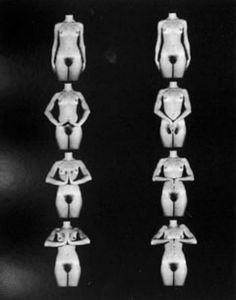The collection entered the archives of the Archeology of Photography Foundation thanks to the personal involvement and interest in promoting the Polish visual arts heritage of one of the Foundation's memebers. After being introduced to Dłubak's family in 2008, she managed to localize parts of his private archive, transport it from Meudon (France) to Warsaw (Poland) and incorporate all the documents, photographs, and notes.
Although the art of Zbigniew Dłubak was displayed during the socialist times, it was partly forgotten after 1989, as it happened with other artists perceived as collaborating with the regime. The Archeology of Photography Foundation team aimed at diligent conservation of the various types of objects from different materials while arranging the archive. Simultaneously, it encouraged artists and art theoreticians, such as Krzysztof Pijarski, to actively use Dłubak's oeuvre in their work and thus, reimagining his opus on the broader European map of the modern art heritage.
Zbigniew Dłubak started his artistic life after the World War II. In the time period from 1947 to 1949 he was a member of the Club of Young Artists and Academics. He was also editing the "Photography" magazine for two decades, the first and most renowed magazine devoted to visual arts and photographic technic in Poland, starting in 1952. While he mainly worked with photography, his second devotion was painting. The photographic series of Dłubak from the years of 1959-1968, are perceived as one of the most important visual oeuvres of that time. Also, Dłubak played a major role and had a great influence on the creation of the post-war Polish artistic milieu. Together with Adam Lachowicz and Natalia LL, he established the Group "Permafo" which worked in a gallery holding the same name in Wrocław. "Permafo" gallery was one of the centers of the Polish conceptual art in the 1970s, and moreover, one of the few places in the country which displayed a divergent set of conceptual art - photographs, films, life performances among the others.
Additionally, Dłubak cooperated with the Warsaw-based galleries of "Krzywe Koło", "Współczesna", "Foksal", and "Remont", as well as the "Seminarium-Foto-Medium-Art" from Wroclaw. His works were displayed in most of the Polish contemporary art museums and galleries.
The Dłubak's collection is both unique and exemplary. It highlights the dividing lines between the engagement in state-supported art institutions and the art produced and kept in private spaces, afar from the official museums and galleries. The entire Dłubak's collection contains not only his photographic series, displayed in galleries and discussed in art theory seminars, but also the more intimate, ambiguous and tentative art works.
The collection also presents the ambivalent nature of artistic creation in the socialist times, namely, the manner in which certain modes of creation were either accepted or rejected by the official art institutions. Even though the entire collection is made of works publicly displayed before 1989, some of the pieces were hidden and never presented due to different reasons. Namely, the fear of censorship, misunderstanding, rejection, and being too “bourgeois” for the state socialist art, can be traced as just few of the abovementioned impetuses. One can interpret the multilayered, often contradictory, life of the author to the year of 1989, through the contemporary exhibitions and art projects managed by the Archeology of Photography Foundation from 2008. The attempts of the Polish art milieu to remain as truthful as possible, even during the state socialist regime, to their genuine artistic vocation can be also traced in the collection.

